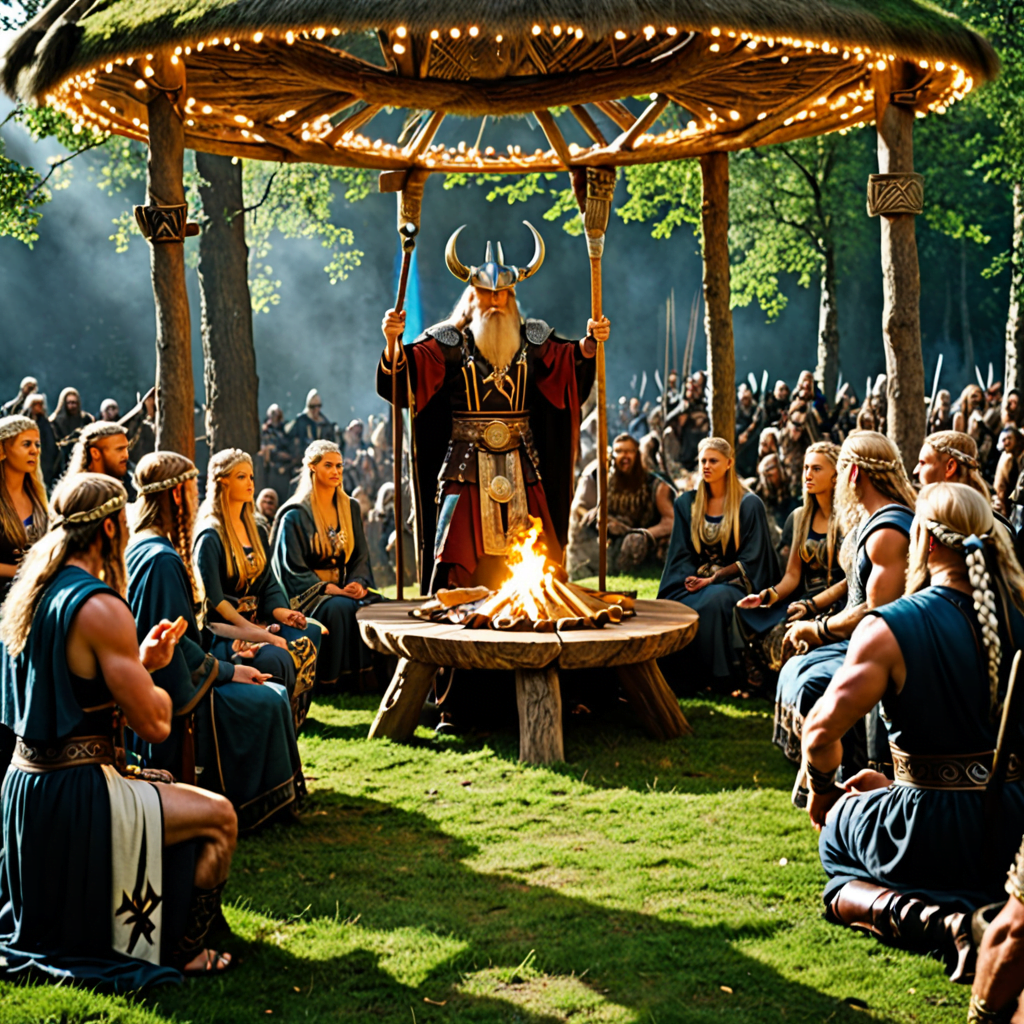The Myths Behind Ancient Deities and Their Animal Companions
1. Introduction to Ancient Deities and Their Symbolic Animals
Ancient deities are divine figures that were worshipped in various cultures throughout history, often embodying elements of nature, human experience, or societal values. These deities frequently had animal companions or were associated with specific animals, which held deep symbolic meaning. The relationships between deities and their animal counterparts offer valuable insights into the cultures that revered them, highlighting the ways in which people understood the world around them.
Studying these relationships is critical as it allows us to unravel the complexities of ancient belief systems and how they shaped the social and spiritual lives of civilizations. By examining the symbolism behind these animal companions, we can better appreciate the values and priorities of ancient societies.
2. The Significance of Animals in Ancient Cultures
Animals played a vital role in ancient cultures, often serving as symbols of power, protection, and guidance. They were not just physical beings but represented various traits and ideals that were esteemed by civilizations. For instance:
- Power: Lions and eagles often represented strength and nobility.
- Protection: Dogs were seen as guardians, while owls symbolized wisdom.
- Guidance: Animals like turtles and serpents were viewed as guides through life’s challenges.
Different cultures attributed various meanings to specific animals. For example, the cow is sacred in Hinduism, symbolizing fertility and motherhood, while the raven is often associated with mystery and the afterlife in many Native American traditions. The variations in symbolism reflect the diverse ways societies interacted with their environment and understood the universe.
3. Egyptian Gods and Their Animal Associations
In ancient Egypt, gods were often depicted with animal heads or as animals themselves, symbolizing their divine attributes. Major deities include:
- Ra: The sun god, often depicted with a falcon head, symbolizing majesty and power.
- Anubis: The god of mummification, represented as a jackal, highlighting his role in the afterlife.
- Bastet: The goddess of home and fertility, depicted as a lioness or domestic cat, embodying protection and motherhood.
The Egyptians believed in the importance of the afterlife, leading to practices like animal mummification, where animals were preserved for companionship in the next world. This illustrates the deep connection between deities, their animal companions, and the afterlife.
4. Greek Mythology: Divine Beasts and Companions
Greek mythology is rich with stories of gods transforming into animals or having specific animal companions. Notable examples include:
- Zeus: Often associated with the eagle, symbolizing strength and authority.
- Athena: The goddess of wisdom, frequently depicted with an owl, representing knowledge and vigilance.
These mythological stories often involve themes of transformation and shape-shifting, showcasing the fluidity between the divine and the animal world. The animals served as manifestations of the gods’ powers and attributes, reinforcing their significance within the culture.
5. Hindu Deities and Their Animal Avatars
In Hinduism, deities are often associated with specific animals known as vahanas or vehicles. Some prominent examples include:
- Ganesh: The elephant-headed god rides a mouse, which symbolizes overcoming obstacles.
- Durga: The fierce goddess rides a tiger, representing strength and valor.
The concept of vahana highlights the spiritual significance of these relationships, as the animal companions embody the qualities that the deities represent. This connection fosters a deeper understanding of the divine’s influence on the physical and spiritual realms.
6. Native American Mythology: Totems and Spirit Animals
In Native American cultures, animals are integral to spiritual beliefs and practices. Totem animals represent tribes or clans and serve as symbols of identity and protection. Key aspects include:
- Totem Animals: Each tribe has specific animals that hold special significance, often embodying traits valued by the community.
- Mythical Stories: Many tales involve animal spirits guiding or teaching humans important life lessons.
The connection between nature and spirituality is paramount in Native American mythology, with animals serving as messengers between the material and spiritual worlds.
7. Norse Mythology: Beasts of the Gods
Norse mythology features a variety of gods and their animal companions, reflecting the harsh and noble aspects of their world. For instance:
- Odin: The all-father is often accompanied by two ravens, Huginn and Muninn, representing thought and memory.
- Freyja: The goddess of love and war rides a chariot pulled by two large cats, symbolizing independence and ferocity.
Animals in Norse cosmology often symbolize loyalty, strength, and the warrior spirit, with their presence indicating the gods’ connection to the human experience and the afterlife.
8. African Mythologies: Ancestral Spirits and Animal Guides
African mythologies encompass a rich tapestry of beliefs, with numerous deities associated with animals. Key points include:
- Animal Counterparts: Many deities have specific animal forms, such as the trickster god Anansi, who often takes the shape of a spider.
- Rituals and Ceremonies: Animals play crucial roles in various rituals, symbolizing the connection to ancestral spirits and the community.
This deep symbolic relationship underscores the importance of animals in understanding community beliefs and values within African cultures.
9. The Impact of Mythical Animal Companions on Modern Culture
The influence of ancient myths, including the relationships between deities and their animal companions, persists in modern culture. Examples include:
- Literature: Many contemporary authors draw inspiration from these myths, weaving them into modern narratives.
- Art: Visual artists often reinterpret ancient symbols in their works, reflecting on their meanings and relevance today.
- Media: Films and television series frequently incorporate mythological themes, showcasing the enduring legacy of these ancient stories.
The continuation of these themes in modern culture illustrates the timeless nature of these relationships, emphasizing how they shape our understanding of identity, spirituality, and the natural world.



